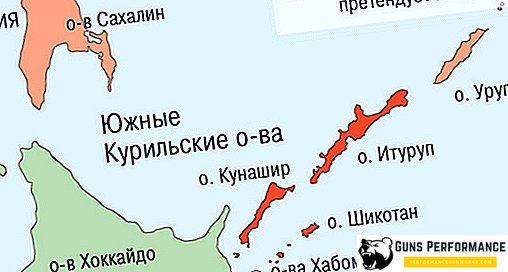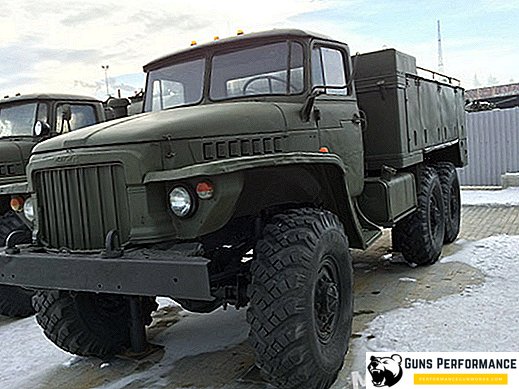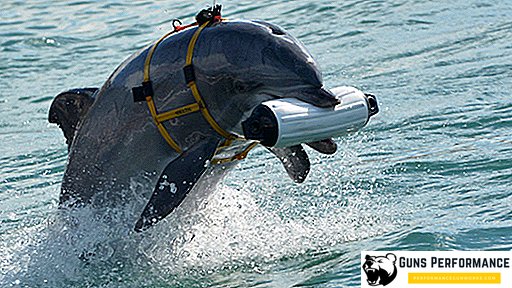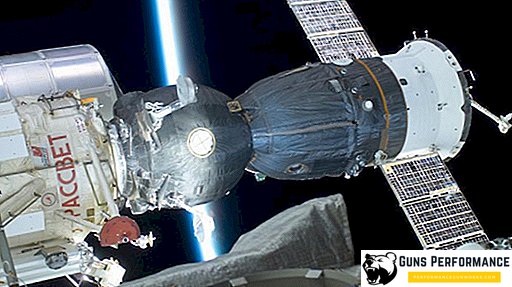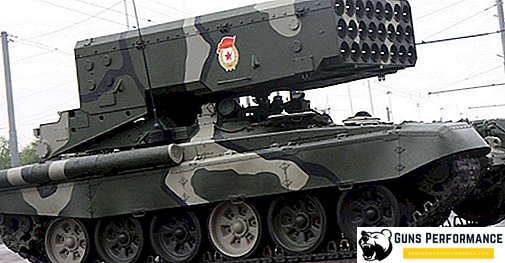In the late fifties of the last century in the USSR there was a need for an aircraft for passenger traffic on local airlines. In addition, the country's Ministry of Defense needed a light transport aircraft with gas turbine engines. The development of such an aircraft was entrusted to the Antonov Design Bureau in Kiev, which already had experience in creating such machines. In 1957, a decree of the USSR Council of Ministers was issued, in which the Antonov Design Bureau was ordered to begin building a passenger aircraft with a capacity of 44 passengers.

History of creation
New car received the designation An-24. It was equipped with two turboprop engines. The first An-24 went flying at the end of 1959, and two years later a modification of the An-24T appeared, created for the needs of military transport aviation. It should be noted that from the very beginning the An-24 had a huge resource for further modernization and improvement, which was emphasized by its creators, including the head of the Design Bureau Oleg Antonov.

However, the An-24T did not quite suit its main customers - the military. There were several complaints: the plane did not provide the landing of light cargo and equipment, had a small fermentation range, the lack of a cargo hatch did not allow to transport even light armored vehicles. In addition, the cargo compartment floor was made of plywood and very quickly fell into disrepair.
In response to these remarks, the Antonov Design Bureau proposed making improvements to the aircraft. In particular, a cargo hatch was equipped at the rear of the aircraft, additional fuel tanks were installed on the An-24, and the aircraft’s payload was increased. The cargo bay was also improved. As a result, the military were satisfied with the modified aircraft, and the An-24T went into mass production. It was produced at the aircraft factory in Irkutsk, the plane was actively used by the Soviet Air Force and civil aviation, it was delivered abroad.

However, the construction of the cargo hatch was not perfect, and the aircraft designers of the Antonov Design Bureau proposed to make a deep modernization of the aircraft. In the new car they planned to seriously change the nose and tail parts. A navigator’s cabin should have appeared in the bow, and a completely new cargo hatch, consisting of several wings and allowing to land cargo and light military equipment, should have appeared in the tail section. New car received the designation An-26. In 1966, the Antonovs began working on the drawings of the new transport aircraft.
Special attention was paid to the cargo hatch. The lower flap, which ensured the tightness of the compartment, turned into a ramp when loaded on the ground; in addition, it could move under the fuselage and ensure the discharge of cargo in flight and the loading of cargo from the vehicle. During the design work, the take-off mass of the An-26 increased to 24 tons, more powerful engines were installed on the aircraft, and changes were made to the shape of the fuselage. Increased cargo hold capacity.
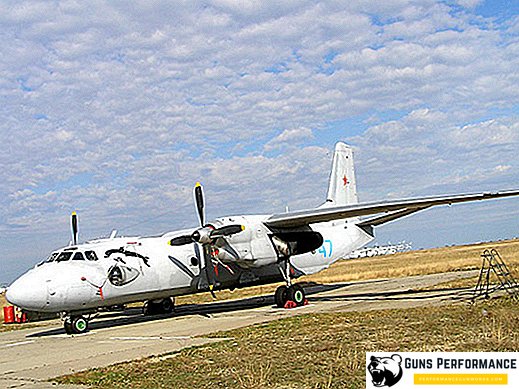
The first An-26 was ready on December 20, 1968. The tests of the aircraft passed normally, and in 1969 the An-26 was presented at the Le Bourget Air Show, where it aroused strong interest of specialists and the general public. The first production car was released in 1969 at the aircraft factory in Kiev. In 1970, the An-26 began to enter service in the country's air force. The serial production of the model continued until 1986.
The plane immediately fell in love with the pilots. The car was easy to operate, reliable, unpretentious. An-26 forgave even gross errors in piloting. At the same time, the car had high technical characteristics; it could be controlled by a pilot of not the highest qualification. In case of failure in flight of one engine, the car quietly landed on another. In this case, the plane could take off from any site.
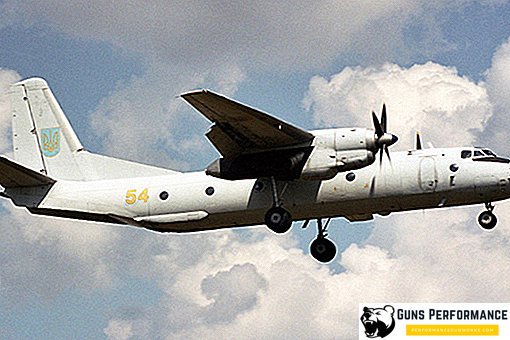
An-26 was actively used during the Afghan war and in those difficult conditions showed its best qualities. In Afghanistan, the aircraft took part in the supply of troops, transported military equipment and personnel, it was used as a radio intelligence aircraft, a radio communications repeater. Several planes were shot down by doumans.
An-26 was also actively used in civilian traffic. In the USSR, several passenger lines were opened on which these machines operated. This aircraft was especially often used in Siberia and in the Far North for both passenger and freight traffic.
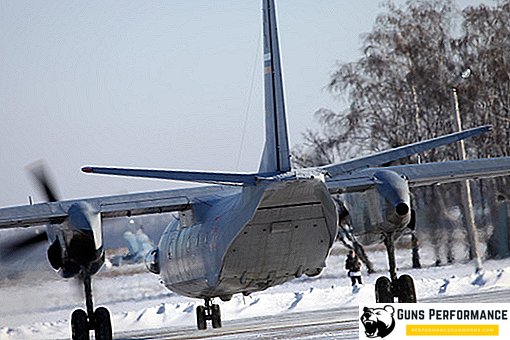
Device
An-26 is a deep modification of the An-24. The plane was created according to the classical scheme, the cockpit is located in the nose of the fuselage, and in the rear is a cargo hatch. Wings small sweep, highly positioned. The fuselage is divided into four compartments, most of it is occupied by the cargo compartment. Crew - six people.
There is a cargo hatch with a ramp at the back, and there is a hoist for loading and unloading.

The AN-26 has a single fin tail, the aircraft’s landing gear is tricycle-patterned and consists of a nose and two main struts.
The aircraft has two AI-24VT turboprop engines (the propeller has four blades) and an additional engine RU-19A-300, which is located in the rear part of the right-hand engine nacelle.

Specifications An-26
| Wingspan, m | 29,2 |
| Wing length, m | 23,8 |
| Airplane height, m | 8,575 |
| Aircraft weight, kg | |
| Empty | 15850 |
| Normal takeoff | 23000 |
| Maximum takeoff | 24000 |
| Fuel kg | 7080 |
| engine's type | 2 × TVD AI-24VT |
| Speed | |
| Maximum speed, km / h | 540 |
| Cruising speed, km / h | 435 |
| Practical distance, km | 1100 |
| Ferry range, km | 2660 |
| Ceiling, m | 7300 |
| Load capacity, kg | 5500 |
| Passenger Capacity | 38 people |

Aircraft modifications
An-26 is still in operation. Over the years, the use of this machine has been released its numerous modifications, created to solve highly specialized tasks. Some of the modifications of the aircraft are made in limited quantities, and even in a single copy.
- An-26 - basic modification.
- An-26B - civilian transport aircraft for container traffic.
- An-26B "Cyclone" - the aircraft to deal with thunderclouds.
- An-26 "Vita" - a medical plane. Built one car.
- An-26D - on the plane installed additional fuel tanks.
- An-26 - aircraft for ice reconnaissance. Built one aircraft.
- An-26P - fire aircraft. Built five cars.
- An-26RTR - aircraft for conducting radio intelligence.
- An-26REP - aircraft electronic warfare.
- An-26 "Sphere" - a special aircraft to study the properties of the atmosphere. Built one aircraft.
- An-26SH - training aircraft.
- An-26M - medical aircraft.
- An-26RT - aircraft repeater.
- An-26-100 - a passenger plane, capacity - 43 passengers.
- An-26LL "Standard" - aircraft laboratory to test the work of the equipment of airfields. There are no analogues.
- An-30 - aircraft for aerial photography.
- An-32 - a plane with an engine of increased power, created for the conditions of high mountains and hot climate.
- Y-7H (Y-14-100) - An-26, manufactured in China.



